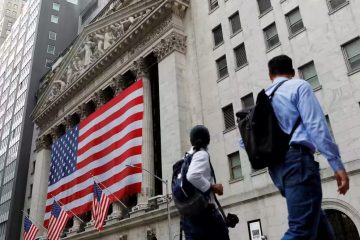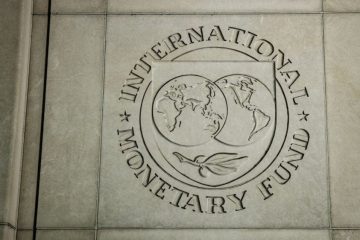Federal Reserve Raises Interest Rates to 22-Year High

The Federal Reserve resumed lifting interest rates Wednesday with a quarter-percentage-point increase that will bring them to a 22-year high. Fed Chair Jerome Powell said it was too soon to tell whether the hike would conclude a series of increases aimed at cooling the economy and bringing down inflation. The central bank would decide whether to keep lifting rates based on how the economy fares in the months ahead, “with a particular focus on making progress on inflation,” he said at a news conference.
The unanimous decision to raise the benchmark federal-funds rate to a range between 5.25% and 5.5% follows a brief pause in increases last month. It marks the 11th rate rise since March 2022, when they lifted rates from near zero. Markets were mixed after the Fed decision. The S&P 500 finished about flat Wednesday, while the tech-heavy Nasdaq moved slightly lower. The benchmark 10-year Treasury yield fell to 3.850% after climbing Tuesday to 3.911%.
more on the fed
At their previous meeting in June, officials held rates steady but penciled in two more increases this year. Fed officials are scheduled to meet three more times this year, with the next meeting in September. Powell’s mission going into the meeting was likely to keep market expectations of another rate rise later this year “priced as a coin flip,” said Daleep Singh, a former executive at the New York Fed who is now chief global economist at PGIM Fixed Income. “Pricing the next set of decisions as a coin flip maximizes flexibility for the Fed to react to incoming data.”
Whether the Fed has finished raising rates isn’t particularly important to investors so long as the debate centers on whether one or two more increases of a quarter-percentage point, or 25 basis points, might be warranted, said Subadra Rajappa, head of U.S. rates strategy at Société Générale. “If you tell me they’re going to have another 100 basis points of hikes, that would be a meaningful change,” Rajappa said.
The Federal Reserve is central to the U.S. economy today, but its power has been built over decades. Its decisions can lower inflation or spark a recession. WSJ explains how the Fed was formed and the role it plays. Inflation has retreated from a 40-year high hit last summer, with the consumer-price index climbing 3% in June from a year earlier. That is well below the June 2022 peak of 9.1%, when gasoline prices reached a U.S. record average of $5 a gallon.
Fed officials have been concerned that underlying price pressures may prove more persistent as a solid labor market allows workers to bargain for higher pay, making it harder to get inflation down further. Core consumer prices, which exclude volatile food and energy categories, in June posted the smallest monthly gain in more than two years, according to the Labor Department’s consumer-price index. But core prices rose 4.8% in June from a year earlier, a still-elevated level. Fed officials are focused on core inflation because they see it as a better predictor of future inflation.
Powell didn’t rule out another rate rise at the central bank’s September meeting, but he emphasized how much the central bank had already done along with the amount of time it can take for monetary policy to cool inflation. “We’ve come a long way. Inflation repeatedly has proved stronger than we and other forecasters have expected, and at some point that may change,” Powell said. “We have to be ready to follow the data, and given how far we’ve come, we can afford to be a little patient, as well as resolute, as we let this unfold.”Powell also said the Fed’s influential staff no longer was forecasting a recession to begin this year, as they had in March, May and June, and instead was projecting a “noticeable slowdown” in growth.
The Fed seeks to keep inflation at 2% over time, as measured by its preferred gauge, the personal-consumption expenditures price index. The Commerce Department will release the June update for that index on Friday. The Fed fights inflation by slowing the economy through raising rates, which causes tighter financial conditions such as higher borrowing costs, lower stock prices and a stronger dollar. The fed-funds rate influences other borrowing costs throughout the economy, including rates on mortgages, credit cards and auto loans.
The Fed boosted interest rates aggressively in 2022 and then slowed the pace at the end of the year. Holding rates steady in June offered a way to further dial down the pace of increases and study the effects of those rapid moves, particularly after fears that banking stress this spring might further constrain credit. “For this last part of the tightening cycle, it makes sense to stretch it out over time. They are fine-tuning. They don’t know the exact destination. It makes sense to do that slowly,” said Angel Ubide, head of economic research for global fixed income at Citadel, a hedge-fund firm.
Federal Reserve Chair Jerome Powell on Wednesday didn’t rule out another rate rise at the central bank’s next meeting. Officials had signaled disagreement in recent months over how to sequence their recent moves. While all 11 voting members of the policy-setting Federal Open Market Committee agreed to last month’s decision to hold rates steady, some of the 18 voting and nonvoting officials would have supported a rate rise at the June meeting, according to a written account released earlier this month.
A few Fed officials have suggested they might prefer to raise rates again at the central bank’s September meeting, while one had endorsed a longer pause. Others who think the impact of the Fed’s rate increases has yet to take full effect are more likely to favor waiting until November or December to decide whether another increase will be appropriate. “We think this will be the last hike” because inflation will continue to slow and the labor market will soften, said Matthew Luzzetti, chief U.S. economist at Deutsche Bank. But the economy has continued to defy expectations of such slowing for a year, creating a risk that the Fed lifts rates again, he said.
Even if Wednesday’s increase marked the finish line, there was little incentive for Powell to validate those expectations until officials see more evidence that inflation and economic activity has slowed. “Financial conditions by many metrics have eased,” said Luzzetti. “They don’t want to do anything that pulls forward market expectations of rate cuts.”
A slowdown in core inflation over the coming months could create a new conundrum for the Fed if officials see reasons to think the improvement will be short lived—for example, because wage growth stays firm. “This is the old, ‘be careful what you wish for,’” said Richard Clarida, who served as Powell’s second-in-command from 2018 until January 2022.
Economists have debated over the past year to what extent slowing labor demand will require joblessness to rise or whether most of the adjustment can occur as companies reduce job openings but not head count. “A lot of the debate on the labor market is beside the point,” Clarida said. “If I was still over there, what I would worry about is the following: If we don’t get a deceleration in wages and we don’t get a pickup in productivity, then we’re not going to hit our inflation target.”








